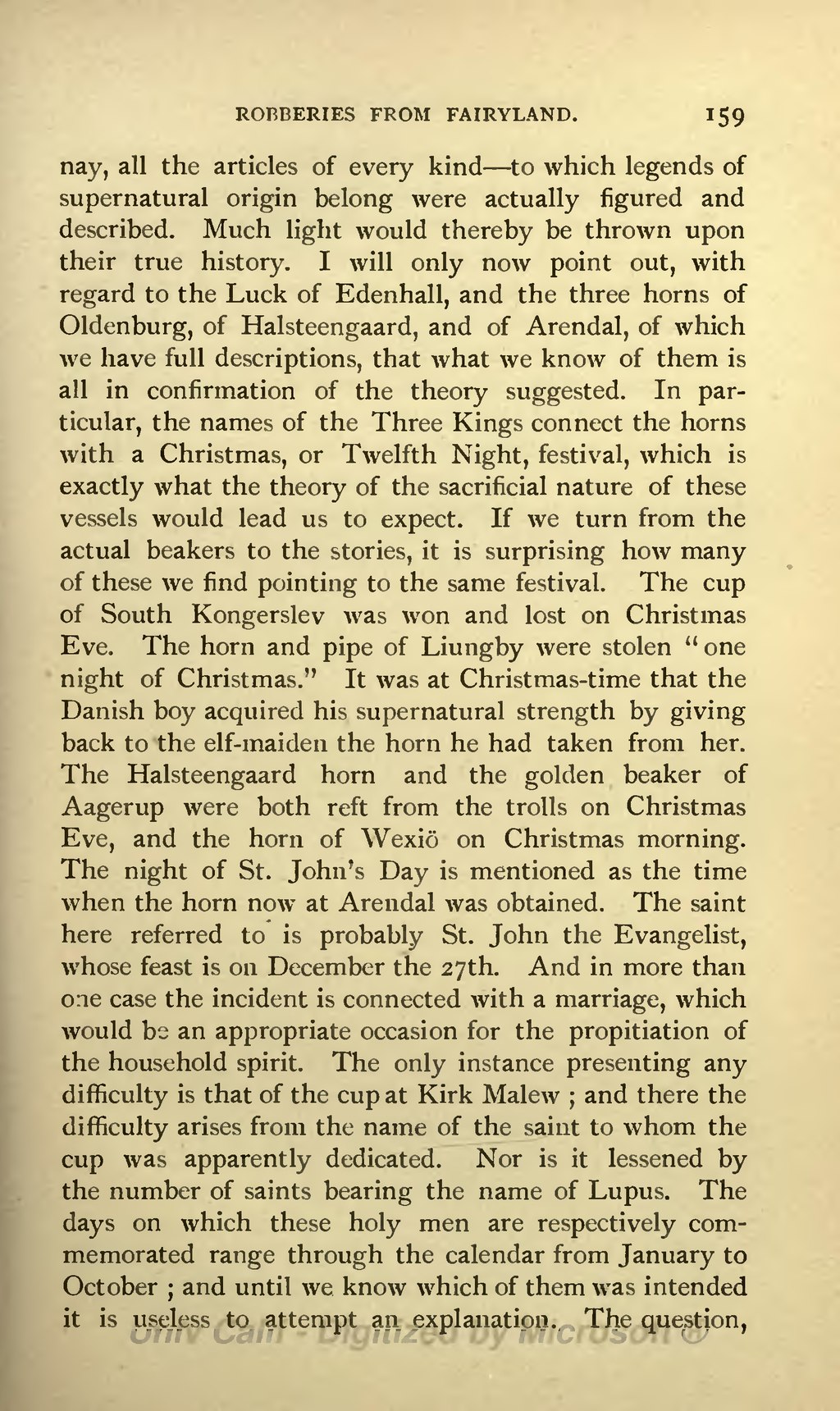nay, all the articles of every kind—to which legends of supernatural origin belong were actually figured and described. Much light would thereby be thrown upon their true history. I will only now point out, with regard to the Luck of Edenhall, and the three horns of Oldenburg, of Halsteengaard, and of Arendal, of which we have full descriptions, that what we know of them is all in confirmation of the theory suggested. In particular, the names of the Three Kings connect the horns with a Christmas, or Twelfth Night, festival, which is exactly what the theory of the sacrificial nature of these vessels would lead us to expect. If we turn from the actual beakers to the stories, it is surprising how many of these we find pointing to the same festival. The cup of South Kongerslev was won and lost on Christmas Eve. The horn and pipe of Liungby were stolen "one night of Christmas." It was at Christmas-time that the Danish boy acquired his supernatural strength by giving back to the elf-maiden the horn he had taken from her. The Halsteengaard horn and the golden beaker of Aagerup were both reft from the trolls on Christmas Eve, and the horn of Wexiö on Christmas morning. The night of St. John's Day is mentioned as the time when the horn now at Arendal was obtained. The saint here referred to is probably St. John the Evangelist, whose feast is on December the 27th. And in more than one case the incident is connected with a marriage, which would be an appropriate occasion for the propitiation of the household spirit. The only instance presenting any difficulty is that of the cup at Kirk Malew; and there the difficulty arises from the name of the saint to whom the cup was apparently dedicated. Nor is it lessened by the number of saints bearing the name of Lupus. The days on which these holy men are respectively commemorated range through the calendar from January to October; and until we know which of them was intended it is useless to attempt an explanation. The question,
